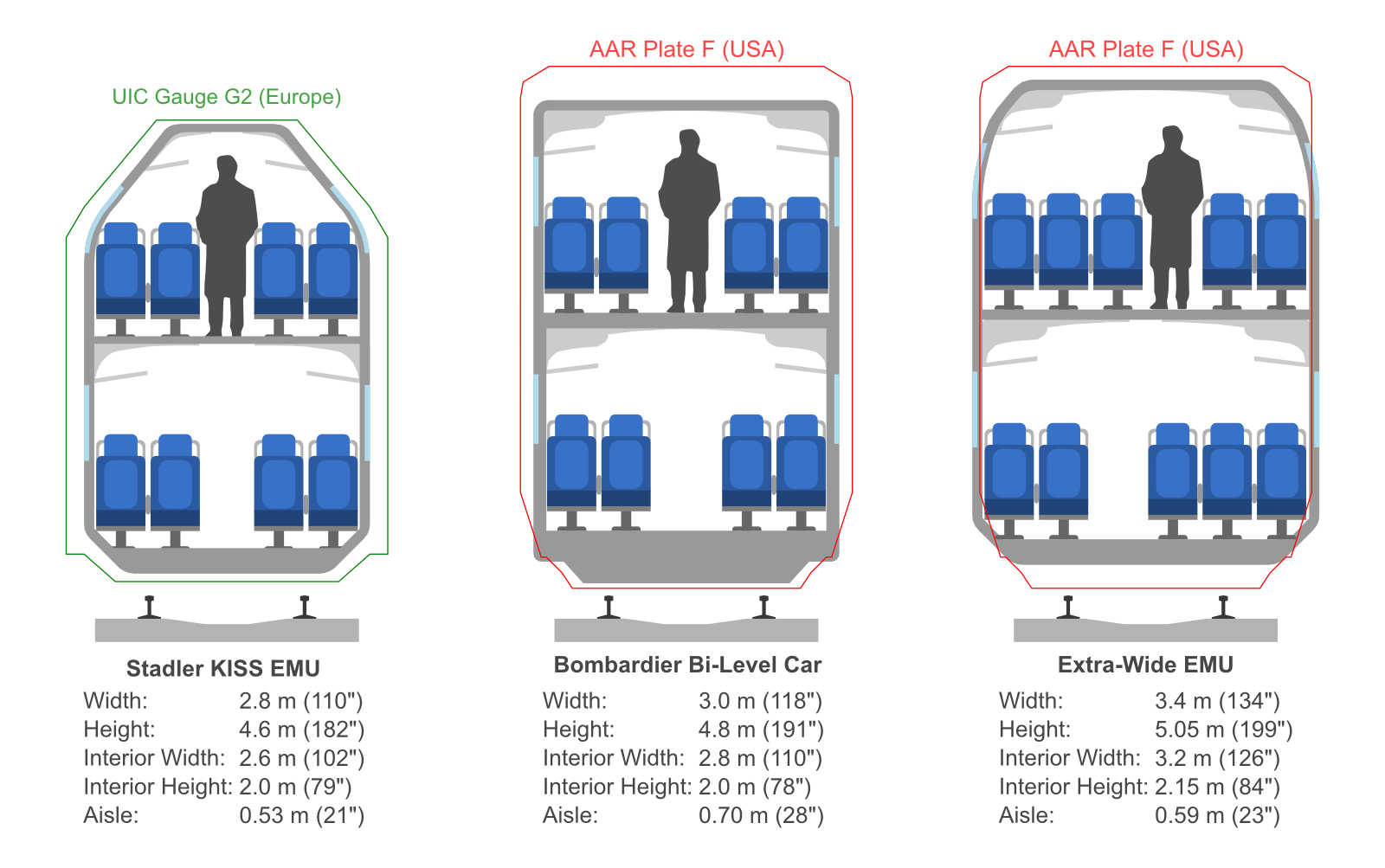Is single deck or double deck better?
Arguments about this will rage forever I suspect, but there are pros and cons to each.
For a higher carrying capacity, single deck trains need to be longer, providing more doors, and theoretically faster loading and unloading. Faster loading means you can push more trains down the line, and helps counter some or all the capacity benefits of double deck.
Longer trains have an obvious cost: longer platforms and it may have other impacts such as on signalling and stabling. This is where Melbourne is going —
the new fleet will start at 7 cars and extend to 9 or 10.
Double deck trains have higher capacity for the length — about 50% more. But they are obviously higher, meaning some existing tunnels and bridges need modification (which may or may not be practical) and extra cost when building new track, especially tunnels.
The power-to-weight ratio of the train could be an issue. Double deck trains obviously concentrate a lot more weight per carriage, while single deck trains that spread the load out over more carriages and wheel sets may assist good acceleration.
Some people will cite security issues, as the decks mean it’s not possible to look along the length of the train. Some also cite risks with level crossings, as the lower deck is vulnerable to a motor vehicle impact, though I’m not sure if that risk has been quantified.
Most cities have stuck with single deck for their high-capacity, short trip urban and metro networks, though
the Paris RER is a prominent example of double deck high-capacity suburban operation, and they’ve designed double deck carriages with a third doorway, presumably at the cost of capacity. But I’m not sure any new lines or networks are being designed for double deck operation.
A number of European countries including Belgium, the Netherlands and
Switzerland use them, but primarily for longer distances, where dwell times are less important.
NSW is moving to single deck for their new metro line. Meanwhile
the UK is considering double deck for its commuter lines (eg NOT the Tube, which has tunnels that are very space-constrained).







